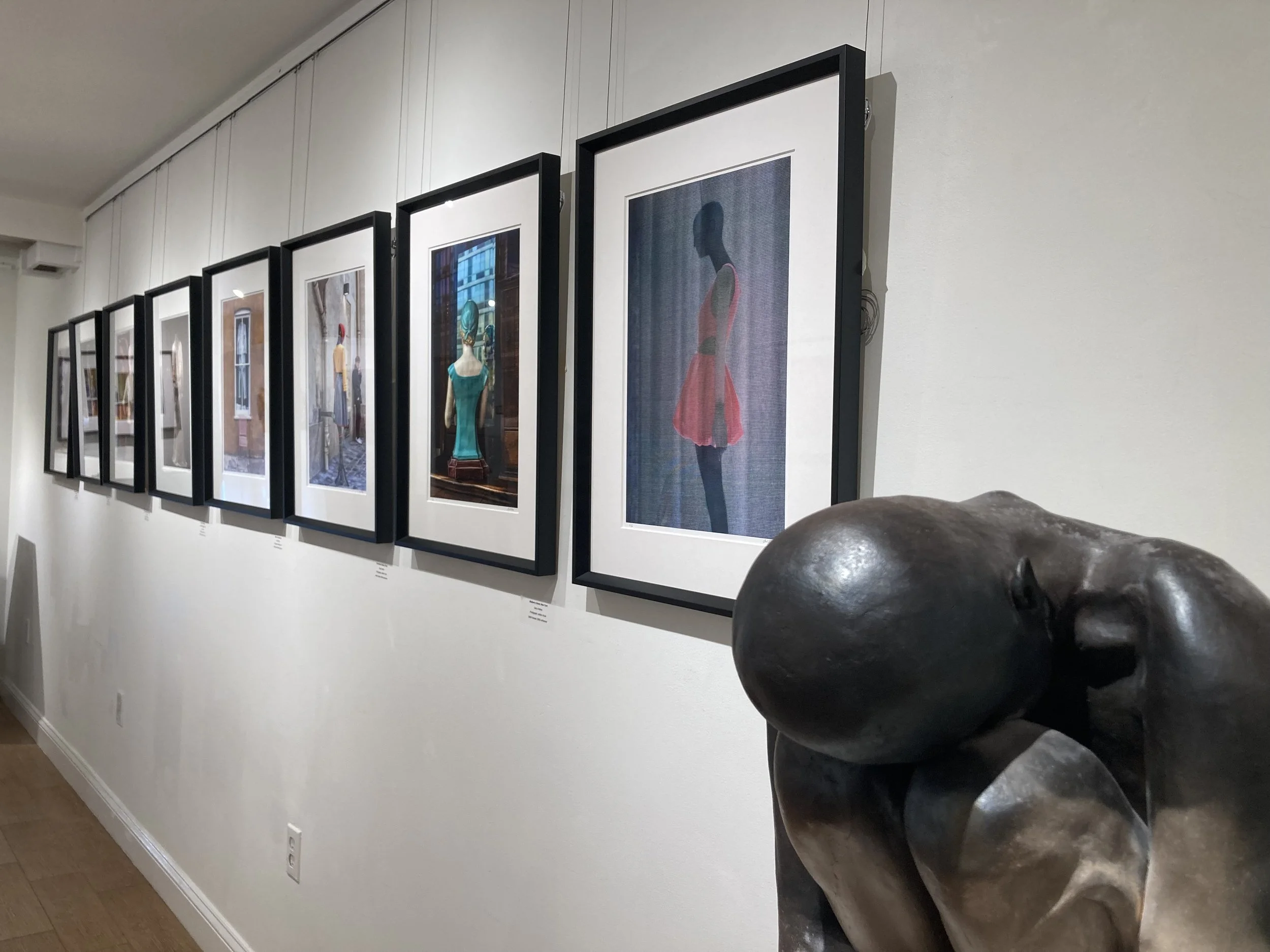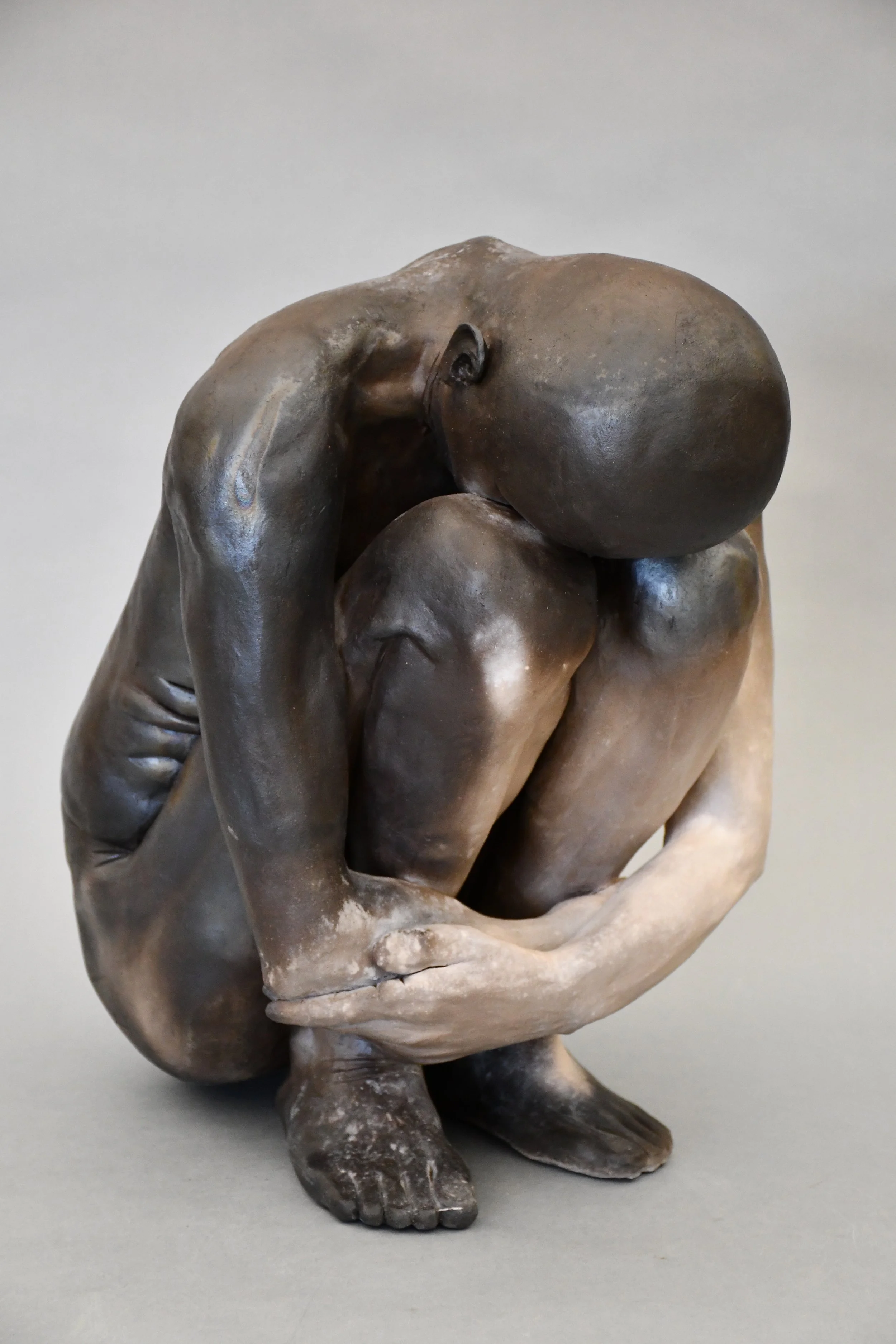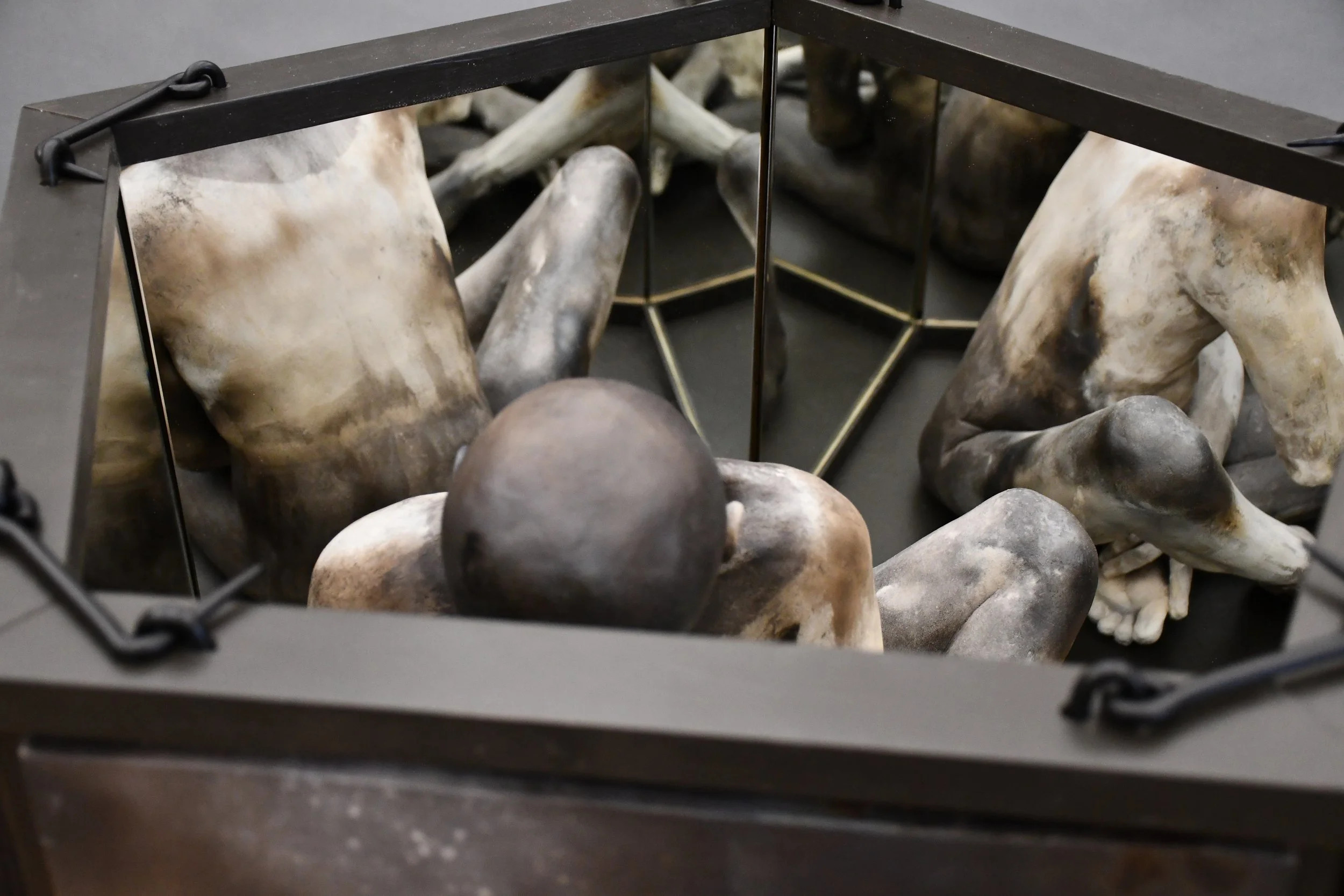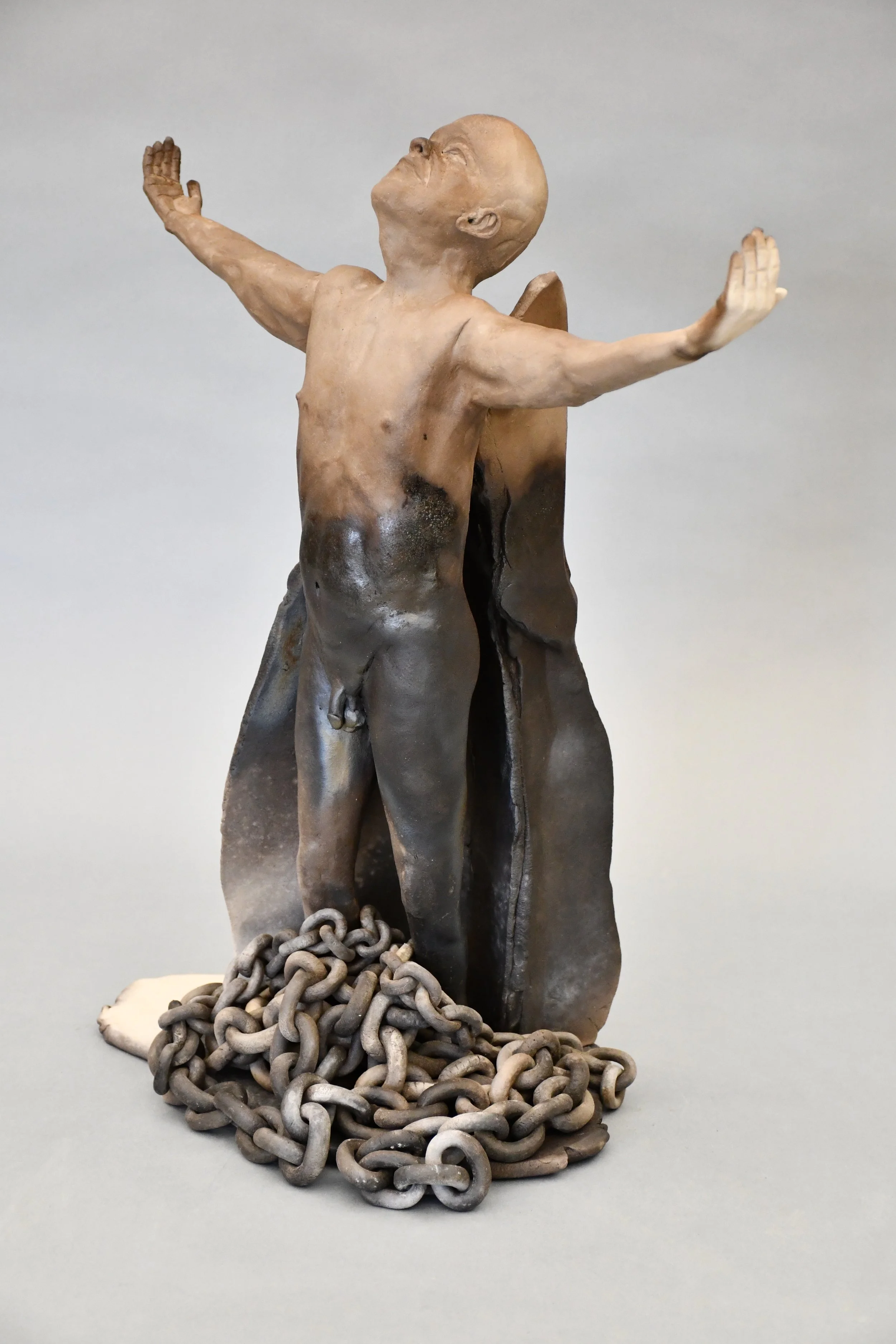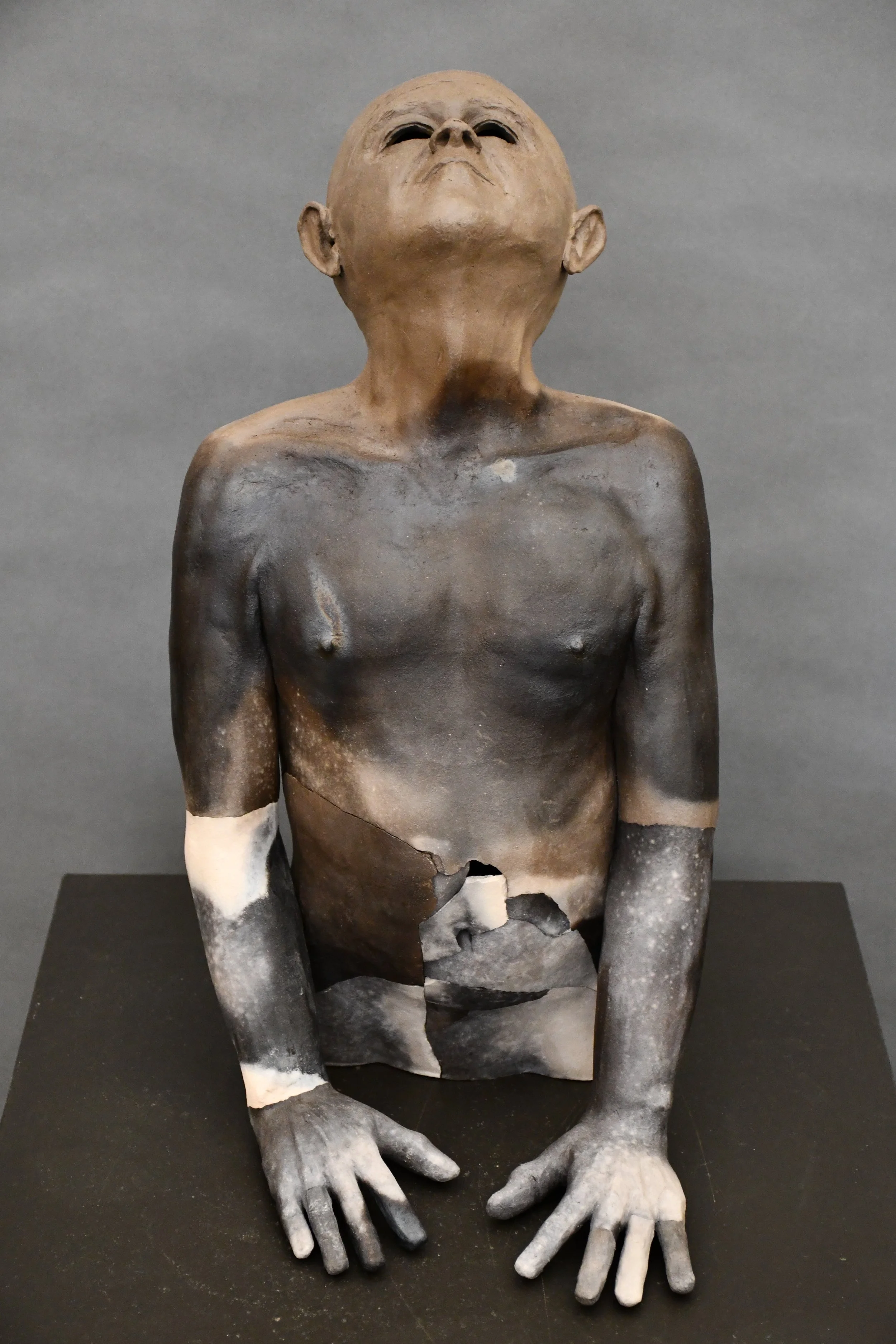I was sure that I had figured it out…well, some of it.
My name is Karen, and my first day at Studio Gallery introduced me to the work of Chris Corson. His sculptures in Figure and Ground, a duo exhibit with Gary Anthes back in September, caught my attention. Looking at these sculptures, I was sure that there must be some narrative, some story between them. So I studied some of the sculptures, looking for answers in the crafted clay. Motifs, themes, anything that would unlock this mystery I was chasing. And then, the best thing happened–
I was wrong.
Image Description: A shot of Figure and Ground by Gary Anthes and Chris Corson, curated by Gaby Mizes. This shot features one of Corson’s sculptures in front of a wall of Anthes’ photography. Photo taken by Karen King.
Chris Corson was kind enough to listen to my speculation on what connections I saw between his sculptures shown in Figure and Ground. He answered my questions asking if he intended any commentary between the pieces. Corson ended up telling me about his process, the personal connection to his work, and the importance of allowing for people’s own interpretation of his art.
Corson said, “ I could get into why I selected the various books and the open pages, but that would get me back in the business of getting in the way of other peoples’ reactions from their own emotions and experiences…so is there a story or commentary linking all my pieces in the show? Yes. But I’d rather have the figures do the communicating. You have asked for my insights, but I had my turn in the making. What is much more relevant now is whether and how the figures resonate with others. Like you. What are your insights?”
This was striking, and in reflection, better than any definitive answer he may have given me. That is the wonderful, beautiful thing about all art– as an audience, we are all going to see different things in it. We will all walk away with a different perspective and story. Then, when we share these stories, we can better understand one another.
So, it is not entirely correct that I was “wrong”. I did not have the wrong interpretation of Corson’s art– I was wrong for thinking that I had found a definitive, “right” answer. The best thing is that there isn’t one! Corson’s earnestness in not wanting to influence what someone takes away from his sculptures reminded me of the importance of interpreting art in your own way.
I want to share the story I’ve been hinting at this whole time. It’s incomplete, it doesn’t make perfect sense, but it is my interpretation of some of the sculptures by Chris Corson in Figure and Ground. It is absolutely not definitive; it could change in a year, it is fluid. In sharing this I am not trying to convince you one way– in fact, I would prefer you look at Figure and Ground, interpret it yourself, then come back and read my interpretation.
Figure and Ground by Gary Anthes and Chris Corson. Curated by Gaby Mizes
The narrative I found in Chris Corson’s sculptures takes place in The World, Rabbit Hole, Hiding, Into Sunlight, and Up From Brokenness. To me, these sculptures depict one person on a transformative journey. It starts with The World.
The World by Chris Corson.
The World (shown left) is a crouched figure not even showing their face. They are making themselves smaller– a stroke of irony, being called The World. I see this figure under the weight of the world– and this is where Rabbit Hole comes in.
Rabbit Hole (shown below), in my interpretation, is the psyche of this individual. The struggles, the hardships, and their own pressure are all staring them in the face from every angle, represented by the mirror box the figure is trapped in. We see them physically for the first time in the figure Hiding (shown under The World and Rabbit Hole).
Rabbit Hole by Chris Corson.
Hiding by Chris Corson.
Hiding (left) is when the figure begins to overcome what they’ve gone through. They begin to stand from their former crouching position.They are still guarded, but they are beginning to find their strengths. Next, they become the figure from Into Sunlight.
Into Sunlight by Chris Corson.
Into Sunlight (left) is the next step of this person’s journey, and it is a great stride. They stand with their arms out wide, the chains of their struggles now cast upon the ground. They look up into the world that has been hurting them, no longer hiding from it. They showcase both strength and vulnerability by opening themselves up to an unforgiving world.
The final piece in my interpretation is Up From Brokenness. I told Corson that in this narrative, I believe that the fractures on the figure’s stomach comes from the chains in Into Sunlight. They are scarred by the things that hurt them, but they are ready to begin anew. The figure is looking up, and it feels as if the sun is shining right on them. They are letting themselves be a part of this world, no longer hiding from it.
Up From Brokenness by Chris Corson.
In this story, I did not know how Corson’s other sculptures, such as the children’s heads and the books, fit into this narrative. I did not know how to explain the connection to Anthes’ incredible photography. I just remember walking into Studio Gallery on my first day and wanting to know the story of this particular figure, who I had believed was the same person depicted across different sculptures.
I am delighted and grateful to have had this dialogue with Chris Corson about interpretation in art, and I am so interested in hearing what other viewers of Studio Gallery made of these works– or of any works they’ve seen. What are the stories that a piece of art has told you?
Signing off,
Karen King
From staff contributor Karen King.


